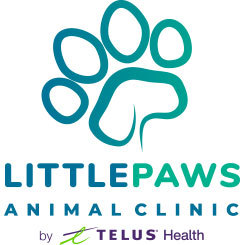As the usage of marijuana has grown due legalization in Canada Veterinarians have experienced a steady growth of marijuana toxicity in pets. Pet Poison Helpline has experienced a 200% increase in calls concerning marijuana toxicity in the last 5 years with more states in the US legalizing marijuana (or medical marijuana). Not everyone is aware that THC (tetrahydrocannabinol – the compound that induces a “high”) is toxic to dogs and cats. Hopefully, after reading this guide to marijuana toxicity, you will know how to recognize when your pet has been exposed to THC. And the importance of seeking medical care for you pet.

How do you know if your pooch has been exposed to marijuana if you didn’t see them gobble it up?
There are a few signs and symptoms that you can look for.
Mild symptoms include lethargy, low heart rate, urine dribbling and difficulty standing or walking.
If your pet ate a high concentration of THC, serious symptoms could occur, such as: vomiting, exaggerated response to stimuli (such as noise or light), seizures, coma and even death.
Signs can take as little as 5 minutes to start. Some could see signs after 12 hours, with most occurring between 1-3 hours after ingestion. It’s important to note that mild to moderate symptoms can occur after inhalation of smoke – they don’t just have to eat it!
If your pet has been exposed to marijuana, it’s important to seek treatment as quickly as possible and be transparent with your veterinarian. If caught early enough, your veterinarian may induce vomiting to try and expel the marijuana. Other treatments include activated charcoal to bind the toxins, and supportive care such as IV or subcutaneous fluids, warming devices, and injections to help with nausea and soothe the gastrointestinal system.
With the increasing use of cannabis oil in treating human medical conditions, a lot of people understandably are wondering if they can use it on their pets. The answer is a bit tricky. While CBD is not poisonous to pets, cannabis oil is not FDA regulated, which means that what you pay for is not necessarily what you get. In one study it was found that in 84 cannabidiol products, 26% of these products contained less CBD than advertised and 43% contained more than advertised. Furthermore, 21% of these products contained THC but were advertised as CBD only products (Pediatr Neurol Briefs. 2018; 32: 3. Inadequate Regulation Contributes to Mislabeled Online Cannabidiol Products). It poses a problem for pets who can get sick from THC exposure. Until a better standard is met, veterinarians cannot advise people to use cannabis oil on their pets.
It’s good to note that in most cases of marijuana toxicity, it’s due to a pet getting into an owner’s personal stash – so remember to keep it someplace where your dog or cat can’t get into, like someplace higher up in a sealed container. Also, reduce your pet’s exposure to inhaled marijuana as much as possible by not smoking around your pet. Prevention can go a long way and is much better than any potential harm and a visit to the vet!




